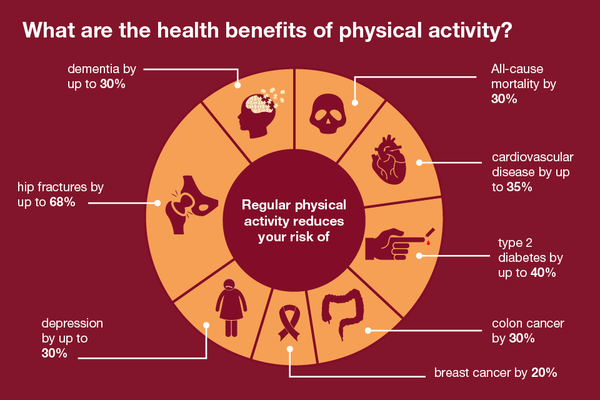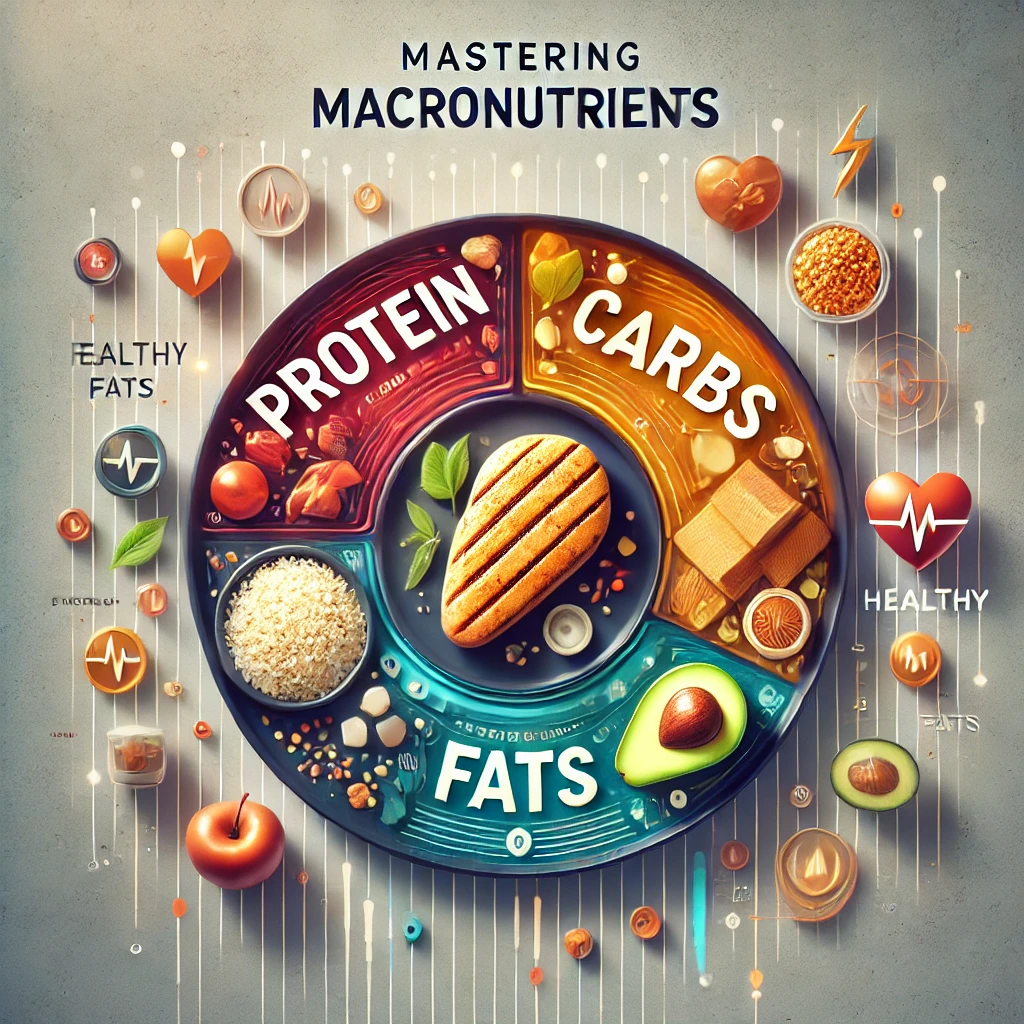Physical activity plays a pivotal role in shaping a healthy, balanced life. It’s more than just a way to stay in shape—regular exercise is a gateway to improved physical health, mental well-being, and a more conscious, health-focused lifestyle. Whether you’re taking daily walks, hitting the gym, or practicing yoga, engaging in physical activities significantly impacts your overall health and fosters long-term wellness.

In this article, we’ll dive into the numerous benefits of regular exercise and explore how it can help you adopt and maintain a health-conscious lifestyle.
Table of Contents
What is Physical Activity?
Physical activity is any movement that engages your muscles and requires energy. It can range from everyday actions like walking or taking the stairs to structured workouts such as running, swimming, or lifting weights. The goal is to move your body in ways that elevate your heart rate and strengthen muscles.
Incorporating physical activity into your daily routine doesn’t have to be complicated. Activities as simple as gardening, dancing, or cycling to work can make a huge difference in your health.
The Different Types of Physical Activity

Not all physical activities are the same, and each type offers distinct benefits:
Cardiovascular Exercise
This includes activities like running, cycling, swimming, and even brisk walking. Cardiovascular (or aerobic) exercise strengthens your heart and lungs, improving endurance and circulation. It’s a key player in reducing the risk of heart disease and helps you burn calories efficiently.
Strength Training
Strength training focuses on building muscle through resistance exercises like weightlifting, push-ups, or squats. It improves muscle tone, increases metabolic rate, and plays a crucial role in maintaining healthy bone density.
Flexibility and Balance
Yoga, Pilates, and stretching exercises enhance your flexibility and balance. These activities can help prevent injury and improve posture, making everyday movements easier and more fluid.
Low-Impact vs. High-Impact Exercises
Low-impact exercises, such as swimming and walking, are gentler on the joints and are ideal for beginners or those with injuries. High-impact exercises, like running or jumping rope, provide more intensity but may not be suitable for everyone. Finding the right balance for your body’s needs is essential.
Physical and Mental Health Benefits of Regular Exercise
Physical Benefits
Exercise offers a range of physical benefits. It strengthens muscles, improves cardiovascular health, enhances endurance, and promotes flexibility. It helps control weight, strengthens bones, and reduces the risk of chronic diseases like diabetes, high blood pressure, and osteoporosis.
Mental Benefits
Beyond physical improvements, regular physical activity works wonders for mental health. It helps reduce stress, boosts self-esteem, and releases endorphins—the body’s natural mood elevators. Exercise can also sharpen your cognitive abilities, improve memory, and even reduce symptoms of anxiety and depression.
Exercise and Heart Health

How Regular Activity Reduces the Risk of Heart Disease
Regular physical activity is one of the most effective ways to prevent heart disease. When you engage in cardiovascular exercise, like walking, running, or swimming, your heart muscles become stronger. A stronger heart can pump blood more efficiently, which improves circulation and reduces the strain on your cardiovascular system. Over time, this reduces the risk of developing conditions like coronary artery disease, heart attack, and stroke.
Exercise also helps keep your blood vessels flexible and improves their ability to transport blood, which prevents the buildup of plaque in arteries. This plaque buildup, also known as atherosclerosis, is a major contributor to heart disease. By maintaining an active lifestyle, you can prevent or even reverse this process, lowering your overall risk.
Impact on Cholesterol, Blood Pressure, and Circulation
Exercise has a profound impact on both cholesterol levels and blood pressure, two major risk factors for heart disease. Regular aerobic exercise helps increase high-density lipoprotein (HDL) cholesterol, often called “good” cholesterol, which helps remove harmful cholesterol from your bloodstream. At the same time, exercise lowers low-density lipoprotein (LDL) cholesterol, the “bad” cholesterol, which can clog arteries.
Physical activity also helps lower blood pressure by improving the efficiency of the heart and vascular system. When you exercise regularly, your heart doesn’t need to work as hard to pump blood, which results in lower blood pressure. Additionally, improved circulation reduces the risk of blood clots and promotes overall heart health.
Exercise for Weight Management

Role of Exercise in Burning Calories
Exercise plays a vital role in managing weight by burning calories. Every time you engage in physical activity, your body uses energy, which helps burn fat and calories. This process helps maintain a healthy weight or supports weight loss when paired with a balanced diet. Aerobic exercises like running, cycling, and swimming are particularly effective at burning calories, while strength training helps build lean muscle, which also boosts your metabolism.
Moreover, exercise helps control the balance between the calories you consume and the calories your body burns. This balance is essential for preventing weight gain, as any excess calories that aren’t used for energy are stored as fat.
Long-Term Benefits for Weight Control and Metabolism
In addition to burning calories during the workout, regular exercise increases your resting metabolic rate. This means your body continues to burn more calories even after you’ve finished exercising, which is particularly beneficial for long-term weight control. Strength training, in particular, helps increase muscle mass, and since muscle tissue burns more calories than fat tissue, having more muscle enhances your metabolism over time.
Furthermore, regular exercise helps regulate hormones that play a role in hunger and fat storage, such as insulin and cortisol. By stabilizing these hormones, exercise helps prevent the spikes and dips that can lead to overeating or fat accumulation, making weight control more manageable in the long run.
Strengthening Muscles and Bones
How Strength Training and Weight-Bearing Exercises Improve Muscle Mass and Bone Density
Strength training and weight-bearing exercises, like lifting weights or doing bodyweight exercises (such as squats and lunges), are essential for building and maintaining muscle mass. When you challenge your muscles with resistance exercises, tiny tears occur in the muscle fibers, which are then repaired and rebuilt stronger. This process not only increases muscle size but also improves muscle endurance and strength.
Weight-bearing exercises also play a crucial role in increasing bone density. Bones, like muscles, respond to stress by becoming stronger. Exercises that force your body to work against gravity, such as walking, running, or resistance training, stimulate bone growth and help maintain bone density, which is particularly important as you age.
Benefits for Preventing Osteoporosis and Joint Issues
Osteoporosis, a condition characterized by weakened bones, can lead to fractures and mobility issues. Regular strength training and weight-bearing exercises help prevent osteoporosis by promoting bone formation and slowing the natural loss of bone density that occurs with age. By strengthening your bones, these exercises reduce the risk of fractures, especially in areas like the hips, spine, and wrists, which are most vulnerable to osteoporosis-related breaks.
Exercise also strengthens the muscles around joints, providing better support and reducing strain on the joints themselves. This is particularly beneficial for people with arthritis or joint pain, as stronger muscles help absorb the impact on joints, leading to less discomfort during daily activities.
Boosting the Immune System
The Connection Between Regular Exercise and a Stronger Immune System
Regular exercise doesn’t just benefit the heart, muscles, or bones—it also has a significant impact on the immune system. Moderate exercise boosts the circulation of immune cells in the body, helping them move more efficiently to detect and fight off infections. When you exercise, your immune system becomes more alert, which increases its ability to ward off viruses and bacteria.
Additionally, exercise reduces inflammation throughout the body, which can weaken the immune response if left unchecked. By lowering chronic inflammation, physical activity allows your immune system to function at its best, keeping you healthier in the long run.
How Physical Activity Helps Fight Off Infections and Diseases
Exercise promotes a process called immune surveillance, where your body continuously monitors for potential threats like bacteria, viruses, or abnormal cells. This heightened state of readiness helps your body fight infections more effectively. Studies have shown that people who engage in regular, moderate exercise have a lower risk of contracting illnesses such as the common cold or flu compared to those who are inactive.
Moreover, regular exercise helps regulate stress hormones like cortisol, which, in excess, can suppress the immune system. By keeping stress levels in check, exercise further supports your immune function, making you more resilient against sickness.
Mental Health and Emotional Well-being
How Exercise Releases Endorphins and Reduces Symptoms of Depression and Anxiety
Exercise is often called nature’s antidepressant, and for good reason. When you engage in physical activity, your brain releases chemicals called endorphins, which act as natural painkillers and mood elevators. These endorphins create a feeling of euphoria, often referred to as a “runner’s high.” This chemical boost helps combat feelings of depression and anxiety, providing a powerful, natural remedy for mental health challenges.
In addition to endorphins, exercise influences neurotransmitters like serotonin and dopamine, which regulate mood and emotional responses. Regular physical activity helps balance these chemicals, leading to improved mental clarity, reduced feelings of sadness, and lower levels of anxiety. Exercise has been shown to be particularly effective for people who suffer from mild to moderate depression, offering relief without the side effects associated with medication.
The Role of Physical Activity in Managing Stress and Improving Sleep
Stress is an inevitable part of life, but exercise can help manage it more effectively. Physical activity reduces the production of stress hormones such as cortisol and adrenaline. When you exercise, your body goes into a “fight or flight” mode, which triggers the release of these stress hormones. However, once you finish exercising, your body starts to relax, allowing stress hormone levels to decrease. This post-exercise relaxation helps reduce overall stress levels and provides a mental break from daily worries.
Exercise also plays a significant role in improving sleep quality. Physical activity raises your body temperature, and when it drops back down after exercise, it signals your body that it’s time to rest. This helps regulate your sleep-wake cycle, leading to deeper, more restorative sleep. Better sleep also reduces stress and anxiety, creating a positive feedback loop that enhances overall well-being.
The Social Aspect of Exercise
Group Activities and Building a Supportive Community
Exercise doesn’t have to be a solitary endeavor. Many people find that participating in group fitness classes, joining sports teams, or simply exercising with friends makes the experience more enjoyable and rewarding. Group activities provide a sense of camaraderie, which can boost motivation and keep you coming back for more. Whether it’s joining a local running club or participating in a yoga class, the social connections you make through exercise can be incredibly fulfilling.
A supportive exercise community also helps with accountability. When you know that others are counting on you to show up for a group workout or team practice, it becomes harder to skip. This accountability is particularly useful for staying consistent with your exercise routine.
The Motivation and Accountability That Come From Exercising With Others
When you exercise with others, you’re more likely to stay motivated and push yourself further than you might on your own. Seeing others around you working hard can inspire you to keep going, even when you feel tired or unmotivated. Group workouts also foster a sense of healthy competition, encouraging you to improve your performance and reach your fitness goals.
Accountability is a major factor in maintaining a regular exercise routine. Whether it’s meeting a friend for a morning walk or attending a scheduled fitness class, having someone to share the experience with makes it easier to stick with your plans. You’re less likely to skip a workout when you know someone else is relying on you to show up.
Exercise as a Tool for Longevity
How Staying Active Can Extend Life Expectancy
Staying physically active has been directly linked to increased life expectancy. Regular exercise helps prevent many of the chronic diseases that contribute to premature death, such as heart disease, diabetes, and certain cancers. By keeping your body in good shape, exercise supports vital functions, such as cardiovascular health and metabolic efficiency, which are critical for a long and healthy life.
In fact, studies show that just 150 minutes of moderate physical activity a week can add years to your life. This doesn’t mean you have to run marathons or lift heavy weights—even moderate activities like brisk walking, cycling, or swimming can significantly improve your longevity.
Preventing Age-Related Illnesses Through Regular Movement
Exercise is one of the most effective ways to prevent age-related illnesses. As you age, your body naturally loses muscle mass, flexibility, and bone density. However, regular physical activity can slow this process, helping you maintain strength and mobility as you get older. Weight-bearing exercises, such as resistance training and walking, are particularly important for preserving muscle and bone health.
Additionally, exercise helps improve balance and coordination, reducing the risk of falls and injuries that are common in older adults. By maintaining physical fitness, you can stay active and independent well into your later years.
How to Incorporate Regular Exercise Into a Busy Lifestyle
Tips for Finding Time to Exercise
Finding time for exercise in a busy schedule can be challenging, but it’s definitely possible with a few strategies. One of the best ways to fit exercise into your day is to break it into smaller chunks. You don’t need to set aside an hour every day—short sessions of 10 to 15 minutes can be just as effective, especially if you combine them throughout the day.
Another tip is to integrate physical activity into your daily routine. Take the stairs instead of the elevator, walk or bike to work if possible, or do a quick workout during your lunch break. Even household chores, like cleaning or gardening, count as physical activity. The key is to make exercise a natural part of your day.
Importance of Setting Realistic Goals and Maintaining Consistency
Setting realistic, achievable goals is essential for maintaining a consistent exercise routine. Instead of aiming for a drastic transformation, focus on small, incremental progress. For example, start with three 30-minute workouts per week and gradually increase the frequency or intensity as you build endurance. This approach prevents burnout and makes it easier to stick with your plan.
Consistency is more important than perfection. Even if you can’t follow your ideal workout schedule, doing something is always better than doing nothing. Prioritize regular movement, and over time, you’ll see the benefits accumulate.
Building a Health-Conscious Lifestyle Beyond Exercise
How Regular Physical Activity Complements Healthy Eating and Mindfulness
Exercise is a crucial component of a health-conscious lifestyle, but it works best when combined with other healthy habits like balanced nutrition and mindfulness. Regular physical activity helps regulate appetite, making it easier to make nutritious food choices. When you exercise, your body naturally craves more nourishing foods, such as fruits, vegetables, and lean proteins, to fuel performance and recovery.
Mindfulness practices, such as meditation or yoga, complement exercise by promoting mental clarity and reducing stress. Together, these habits create a holistic approach to health and wellness, where your mind and body work in harmony to improve overall well-being.
The Holistic Approach to Health and Wellness
A holistic approach to health doesn’t focus solely on physical fitness—it encompasses mental, emotional, and spiritual well-being as well. Exercise, when paired with proper nutrition, restful sleep, and mindful practices, helps create a balanced lifestyle that supports long-term wellness. This holistic approach empowers you to take care of your entire self, not just one aspect of your health.
Incorporating regular exercise into your life sets the foundation for this well-rounded approach, encouraging healthy choices in other areas of life as well.
Barriers to Regular Physical Activity and How to Overcome Them
Common Obstacles: Lack of Time, Motivation, Physical Limitations
Many people struggle to maintain regular physical activity due to common barriers like a lack of time, motivation, or physical limitations. Busy work schedules, family obligations, or even low energy can make it difficult to find time to exercise. Similarly, some individuals may feel discouraged by past failures or a lack of immediate results, which can diminish motivation.
Physical limitations, such as chronic pain or medical conditions, can also make certain types of exercise more difficult. However, these barriers don’t have to prevent you from staying active.
Solutions and Strategies to Stay Active
To overcome these obstacles, start by prioritizing short, manageable workouts. Even 10 minutes of movement a day can make a difference, and small steps add up over time. Set specific, realistic goals that fit your current lifestyle, and adjust them as needed. If you struggle with motivation, try varying your workouts to keep things interesting—mix in new activities like dance classes, hiking, or swimming to stay engaged.
For those with physical limitations, consider low-impact exercises like swimming, cycling, or yoga. These activities are gentle on the joints but still provide excellent cardiovascular and strength benefits. Working with a physical therapist or personal trainer can also help tailor a fitness routine that meets your specific needs and limitations.
FAQs
- How much exercise should I aim for each week? Aim for at least 150 minutes of moderate aerobic activity or 75 minutes of vigorous exercise weekly, plus strength training twice a week.
- Can I stay healthy without vigorous exercise? Yes, even moderate exercise like brisk walking or swimming has significant health benefits.
- What’s the best time of day to exercise? The best time is whenever you can fit it in consistently—morning, afternoon, or evening, it all counts.
- How does exercise impact my mental health? Exercise releases endorphins, reduces stress hormones, and improves mood, which helps manage anxiety, depression, and stress.
- Can I still exercise if I have a chronic illness? Yes, but consult your doctor for specific recommendations. Many chronic conditions benefit from tailored exercise plans.
Conclusion
Incorporating regular physical activity into your life can transform your physical health, mental well-being, and overall quality of life. Whether you’re aiming to improve heart health, boost your mood, or simply feel stronger and more energized, exercise is a powerful tool to help you get there. Make it a habit, and you’ll pave the way for a more health-conscious, balanced lifestyle.










